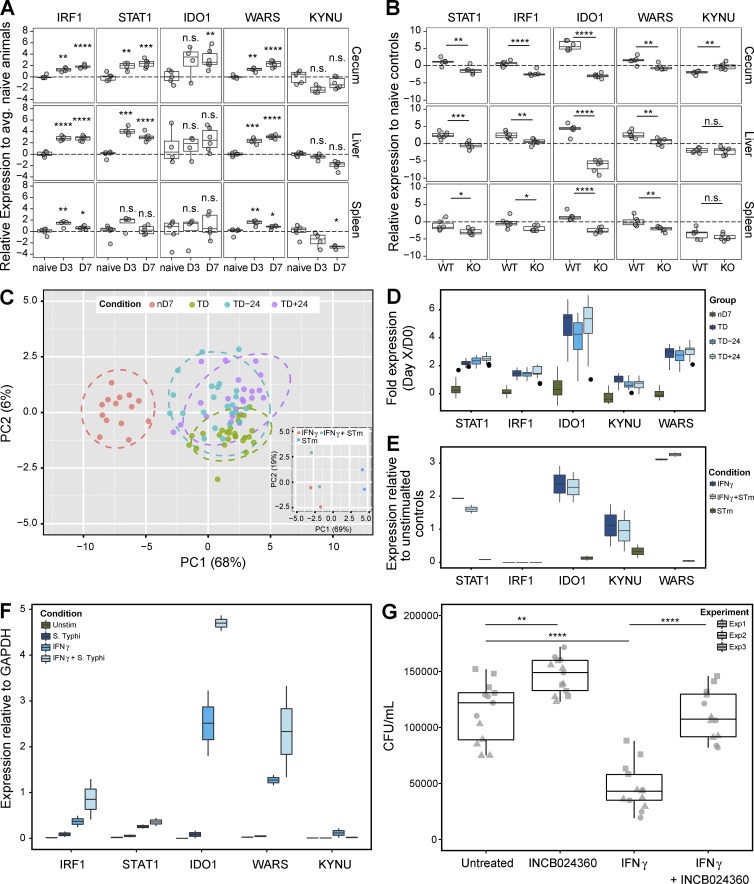Figure 7.
IFNγ-mediated IDO1 expression in vivo. (A) Gene expression was measured in spleen, cecum, and liver of WT mice at D0 (n = 5), day 3 (n = 4), and day 7 (n = 6) after infection. (B) Gene expression was measured in spleen, cecum, and liver when WT (n = 6) and IFN-γR−/− (n = 6) mice experiencing 12% weight loss PI. (C) Gene expression (log2 FC) of the IFN–tryptophan signaling network genes at day 7 (n = 16) and TD−24 h (n = 23), TD (n = 25), and TD+24 h (n = 22) in those who stayed well or were diagnosed after infection. (C, inset) Protein expression (log2 FC) in IFN-γ–primed macrophages alone (IFN; two independent experiments), infected with S. Typhimurium (IFN+STm; two independent experiments), or unprimed macrophages infected with Salmonella (STm; two independent experiments). Target gene (D) or protein (E) expression (log2 FC) in whole blood of participants challenged with S. Typhi (nD7, n = 16; TD-24, n = 23; TD, n = 25; TD+24, n = 22) and macrophages stimulated with S. Typhimurium (two independent experiments), respectively. (F) Gene expression (log2 FC) of macrophages alone (unstim), infected with S. Typhi BRD948 (S. Typhi), IFN-γ–primed macrophages (IFN-γ), and INF-γ–primed and S. Typhi infected (IFNγ+BRD; two independent experiments/condition). (G) Unprimed macrophages were infected with S. Typhi BRD and IDO1 inhibitor alone (INCB024360), after IFN-γ–priming (INF-γ), after IFN-γ priming and IDO1 inhibition (IFNγ+INCB024360) or alone (untreated), and bacterial counts were determined (three independent experiments/condition). At least three mice per group and time point were analyzed (A and B). Circles represent 95% CI (C). Data are mean FC over appropriate controls with 25th/75th percentile (A, B, and D–G). At least two independent experiments (C, inset, and E–G) with at least two biological repeats were performed. Q-PCRs were run in duplicates. *, P < 0.05; **, P < 0.01; ***, P < 0.001; ****, P < 0.0001 using unpaired Student’s t tests.

